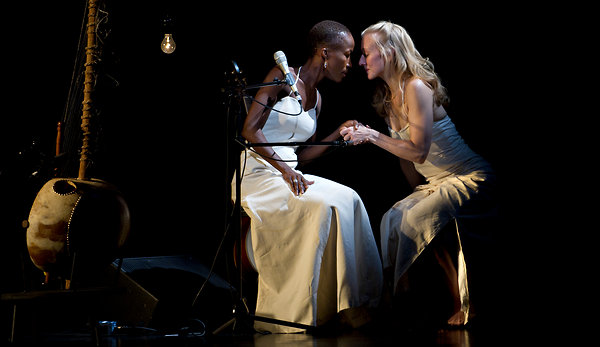
I found inspiration for this blog in the interview with Josephine Kwhali who discusses ‘unconscious bias’ as part of the UCU black members’ standing committee oral history project. She argues that if, after many years of discussions, policies, strategies on the topic of race-equality, racial discrimination is still unconscious “then there is really something worrying about what it will take for the unconscious to become conscious” (2016). The question of consciousness in the art of acting is a very important notion. Being conscious is essential in actor training because it enables students to develop a strong connection with their characters and the narrative they are delivering. On stage or in front of the camera, it allows them to be more sincere, responsive, and emotionally available. It entails paying attention to one’s own thoughts, feelings, and surroundings as well as being fully present in the moment, both physically and emotionally. Actors who are conscious are better able to transmit to the audience the intents, feelings, and motives of their characters. Also, actor’s consciousness influences artistic choices, fosters empathy, and contributes positively to society as a whole. In my teaching practice, I use various techniques and exercises to help acting students develop consciousness, such as mindfulness practices, sensory awareness exercises, physical warm-ups, emotional exploration, etc. In addition to strengthening actors’ mind-body connections, these techniques enhance their listening and responding abilities, as well as cultivating a sense of complete consciousness. When students are fully present, they are given materials that explore the topic of racial and other types of discrimination in society that playwrights deal with in their works, most frequently in the form of contemporary interpretations of classical works like Toni Morrison’s adaptation of Shakespeare’s Othello (see image above). In this way, students become aware of the recurring patterns of racial, gender, socioeconomic, class, and other forms of discrimination and segregation throughout the history of western civilisation. It gives me great pleasure when I see how my students become not only skilled performers but also responsible and socially aware individuals.
2016, Witness: unconscious bias, Josephine Kwhali discusses ‘unconscious bias’. UCU black members’ standing committee oral history project: https://www.youtube.com/watch?v=Y6XDUGPoaFw
3 responses to “Inclusive practices-Race”
Hi Mirjana,
I found the parallel that you’ve drawn of conscious behaviours and acting quite interesting. I wonder how those exercises would look like if we pushed the students to create scenarios where they enact / feel the discomfort often described by people of colour when entering spaces that don’t feel welcoming, or get the feeling that all the eyes are on them. The second I suppose is a quite common feeling for a performer.
How can we create enacting exercises that push people to put themselves in the other’s skin without hurting further or stirring difficult feelings for those who already experienced them?
Just thinking out loud based on what you wrote 🙂
I haven’t watched the Othello adaptation that you mentioned but that sparked my curiosity an I will will try to find it.
Hi Mirjana, I found the parallel that you’ve drawn of conscious behaviours and acting quite interesting. I wonder how those exercises would look like if we pushed the students to create scenarios where they enact / feel the discomfort often described by people of colour when entering spaces that don’t feel welcoming, or get the feeling that all the eyes are on them. The second I suppose is a quite common feeling for a performer. How can we create enacting exercises that push people to put themselves in the other’s skin without hurting further or stirring difficult feelings for those who already experienced them?
Just thinking out loud based on what you wrote..
I haven’t watched the Othello adaptation that you mentioned but that sparked my curiosity an I will will try to find it.
Hey Mirjana,
Thank you for your reflections. As a performance artist working in the Performance: Design & Practice department at CSM I find it really practically useful to hear how you increase consciousness in your students. I notice and find it refreshing how your strategies for raising consciousness involve encouraging the students to engage with their bodies, before launching into speech. I will try some of these in my own classes!
Rosa